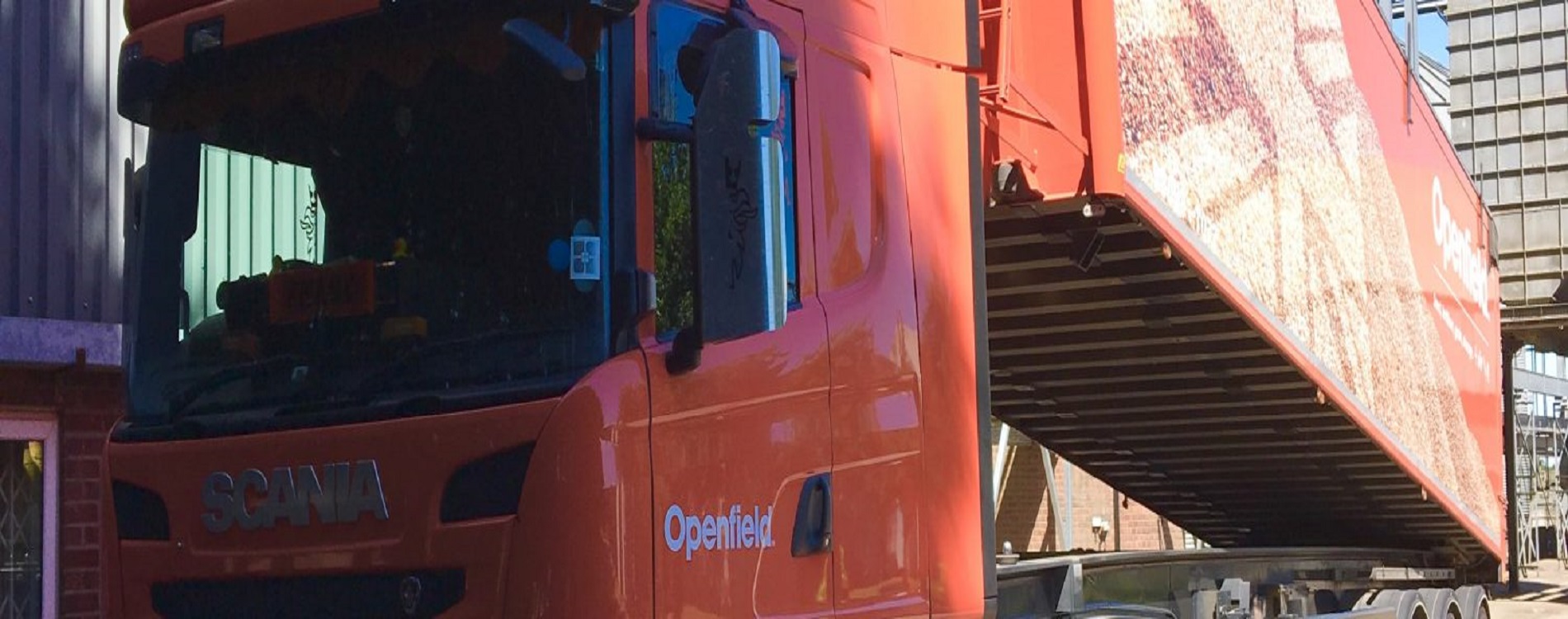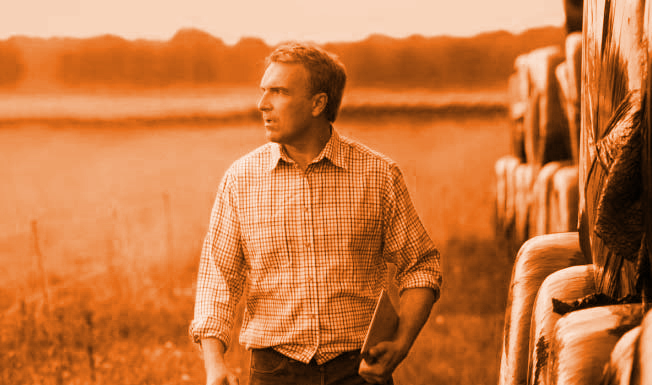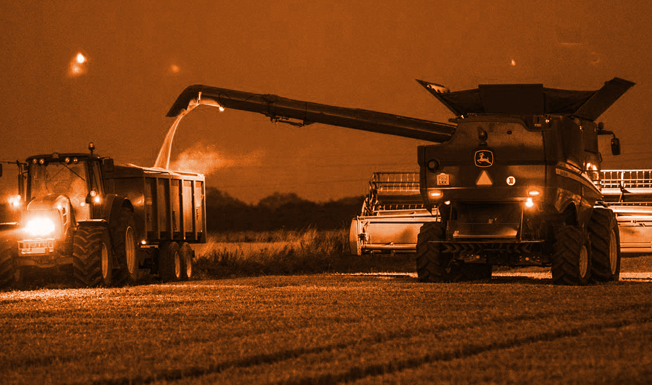Better buying, better selling – When risk becomes reward
The grain market can be a hostile environment, and becomes ever more volatile. CPM seeks expert advice on how to use it to your advantage.
It’s important to work with someone you trust.
By Tom Allen-Stevens Editor of CPM Magazine
Your attitude to risk may largely define your marketing strategy, and when dealing with a volatile market, there’s little doubt the rewards can present themselves. But member services director at Openfield Richard Jenner believes there’s a world of difference between using risk to bring reward and merely being reckless.
“Businesses that demonstrate resilience understand how to manage marketing risk,” he says. “It’s not about second guessing the market, but having a strategy that marries your individual circumstances with the various tools available to bring your business the optimum returns.”

Britain’s biggest grain exporter, Openfield traded over 1M tonnes in 2015 with overseas markets.
There are three elements to this: the marketing strategy itself, the relationship with the end user, and then the logistics and infrastructure required to actually deliver the goods. “The difficulty for farmers is that much of this side of the business is out of their control. It’s the very reason Openfield started in the first place. We were originally set up as a grain-marketing cooperative – a group of farmers that came together to gain marketing clout, manage volatility and make more use of the supply chain.”
Owned by 4000 UK arable farmers, it now handles about 4M tonnes of grain, or 20% of the UK’s total market. It prides itself on not only supplying some of the biggest and best-known names in the British food and drink manufacturing industry, but doing so on an equal footing, he points out.
“We’re also Britain’s biggest grain exporter, when the market is right, trading over 1M tonnes in 2015 with overseas markets. We’re farmer-owned but consumer focused, building relationships with end users designed to work well today and also in the future when the UK is no longer an EU member state.”
While this offers farmers a fair trading position with which to engage with the market, it doesn’t remove the risk for the individual farmer. “A little bit of exposure to the market is not a bad thing. Risk can be seen as a jigsaw puzzle and if you fit the pieces together correctly, it gives you a picture of the market and how best to supply it. The key is to work with people you trust to inform how that comes together.”
Richard sets out seven steps to better grain marketing:
- Set a target price, basing your minimum price on your cost of production.
- Understand the risks, identifying this season’s market fundamentals and what they mean.
- Develop a strategy which reflects the certainty you need and the risks you’re prepared to take.
- Decide your exposure, in terms of the proportion of your crop that’s unpriced, sold forward at a fixed or minimum price, in a pool or market tracker.
- Monitor the risks, setting cues so you know when key points materialise.
- Evaluate your performance, considering what could have been done differently.
- Get help, from a risk-management partner who understands your priorities.
“Attitudes to risk vary hugely, from some farmers who understand the market and like to maintain full control and flexibility, to others, especially those in contract-farming agreements or too busy elsewhere to engage with trading.”
Producers Direct is Openfield’s route for the actively involved. “These are the farmers who liaise on a regular basis with their Openfield Farm Business Manager, setting contracts that allow them to define a strategy that fits their needs. There’s plenty of information to help them keep track of the market – the challenge is to make sense of it, which is the aim of the market commentary we provide on a weekly basis.”
For those who want the flexibility and control of selling their grain, but don’t have the time nor inclination to follow the market, trackers are a good option, says Richard. “They’re based on the futures market and track the market daily over a time period you set to give an average price.”
Pool marketing offers the least risk option, in which you commit tonnage to large quantities of grain that are marketed by Openfield’s pool strategy team, working to get the best price on behalf of all farmers in the pool. “You set the movement period, depending on your situation. That and your crop type and quality dictates what pool you’re in.”
But cashflow, crop movement and the ability to store often dictate your flexibility to get the best price from the market. Richard feels farmers shouldn’t be held to ransom to the market just because they have a fertiliser bill to pay. “All Openfield members can use the Crop Fund, allowing them to draw down up to 80% of their committed crop value.”
There’s also a range of storage options available to farmers even for those who don’t have adequate on-farm facilities. “Openfield fully supports many of the central storage cooperatives that exist across the UK and helped a number of those expand. The advanced facilities available at these sites allow grain to be delivered to an exact specification and to a timetable that suits end users, and take the worry of storing and out-loading grain off the farmer.”
A number of member-owned stores are now joining to bring further efficiencies, he notes – Trinity Grain, for example, has been formed from Wiltshire Grain, Hampshire Grain and Ridgeway Grain coming together with a total capacity of over 200,000t. “You can find grain criss-crossing past stores on its way to various markets. We’ve helped identify areas where stores working together can meet end-user needs better and cut down on grain miles.”
Managing the supply chain is part of what Openfield does, he adds. The company’s fleet of lorries covers 2M miles every year, collecting 700 loads of grain every week. “ForFarmers knows it can call one office and get any number of loads delivered to their mills when they want them. But we’ve also worked to improve efficiencies at the point of tipping and at loading – we can’t have lorries waiting around for hours, and have introduced fleet utilisation systems that ensure farmers outload with the minimum of hassle.”
Improvements in in-cab technologies mean that you can view where your Openfield driver is in real time on a map, or you can be notified by SMS or email when the lorry’s en route. Weighbridge information is relayed instantly back to the farm it came from, and can be viewed through Openfield’s Insight portal, from where data can be downloaded or printed off.
“These services are only available through Openfield’s own-branded fleet of orange lorries at present, and the amount of information received back, particularly quality criteria, depends on the information the customer wishes to disclose. But we are working actively to improve data exchange on grain throughout the supply chain,” notes Richard.
He sees these relationships becoming increasingly important post Brexit. “We don’t know how the landscape will shift, but we expect UK production to change and for the domestic consumer to become more significant. We’ve always had strong ties at both ends of the supply chain, so although the risks involved may increase for all as the market evolves, we’ll be working to ensure this is managed in the right direction.”
Insight on a market that’s hard to fathom
Grain markets don’t sleep, points out senior market analyst at Openfield Cecilia Pryce. “The picture’s always changing, and you’re bombarded by so much information it can sometimes be a job to know which way is up.”
Making sense of this obscure picture is what she provides through weekly market commentary provided to Openfield members and insight provided to the grain-trading team.
“It’s important to find time to focus on the grain market on a regular basis, and to find a trusted source of information – sometimes “news” is sent out with the specific intention of making commodity markets move. So if you want to make the right decisions, either you need an in-depth understanding of the market, or you work with someone you trust who has.”
She believes farmers should play to their strengths. “If you have a sick animal, you tend to call a vet rather than cure it yourself. Likewise, you may not be best qualified to master the market for your produce – it requires an understanding of hundreds of variables that are beyond your control. It may be better to focus your efforts on being the best in class at what you do, ensuring you consistently have the quality, quantity and integrity of produce for the market you’re striving for. That may add more value to your crop than playing the market.”
And this year, it’s unclear just how much the UK has actually produced, she notes. “Defra has published an estimated wheat crop of 14M tonnes. But that’s moisture adjusted, and most grain will be delivered below 13%. So it depends on end-user utilisation and this year, import demand is a key influence on the market – it changes on a daily basis and the ability of consumers to switch between soya, wheat, barley and maize will dictate how prices fluctuate.”
A new influence has come about through “Trump taxes”, Cecilia points out. “The EU has imposed a 25% tariff on US maize in retaliation for steel duties, but interestingly hasn’t applied this to soya, unlike China. That’s sucking in thousands of tonnes of US soya into EU markets as a result.”
Overall current buoyancy in wheat prices comes down to a lower global harvest than predicted. “A number of wheat-producing areas in the northern hemisphere have a smaller crop, the EU and Russia in particular, reducing the global estimate from a predicted 748M tonnes in May to 730M tonnes in August. All eyes are now on the Argentinian and particularly Australian harvests. Australia is one of the largest exporters in the world, so a small crop will have a big impact.”
Longer term, Cecilia doesn’t see Brexit having too much of a direct impact on the main grain markets. “A no deal would affect grain products more than the raw commodities themselves, and it’s difficult to know what the on-farm impact would be.
“We are going into a period of uncertainty, however, and grain markets always move where they want to. So it’s important to work with someone you trust – I’ve been following the markets for 28 years and while it constantly does the unexpected, I’d hope the commentary I provide continues to help farmers make the right decisions.”
Trust and transparency come from end-to-end relationships
A willingness to collaborate underscores good relationships throughout the supply chain, and this is set to become all the more important as Brexit approaches, according to Openfield CEO James Dallas.
“We have a number of supply chain contracts and the reason they work is that they support our model for supplying grain. Farmers commit their crop in plenty of time before harvest, so we can anticipate what’s available which gives the end user confidence they have security of supply.”
But the relationship goes further than just trading grain, he points out. “Take the contract with Warburtons, for example. Farmers who supply the wheat follow a slightly different protocol – there’s no pre-harvest glyphosate applied, nor late protein applications to the ear, and a slightly lower protein content is accepted.”
Openfield works with Warburtons to ensure the product meets the exact spec they’re after. This includes selecting varieties that suit, offering farmers seed contracts to supply the requirement, and carrying out trials across the UK, to develop a nutrition programme tailored to delivering the right results. This is in addition to managing the wheat supplied by the Warburtons farmers themselves.
“It gives Warburtons the confidence in their supply chain, right down to farm level, and that carries through to the brand. It’s a fantastic contract for the farmer, with a good guaranteed premium, and they’re part of building that brand confidence.”
A similar contract with Simpsons Malt delivers the same end-to-end relationships that bring benefits to both end user and farmer with malting barley, says James, and it’s a passage of travel Openfield is working hard to encourage. “The closer the grain trade gets to the food chain the better it becomes.”
He believes a two-way flow of information is an integral part of the relationship. “We understand the value of feedback for farmers on quality spec. Historically this has been neglected by the trade, and there are barriers to providing this, mostly to do with the technology involved. But as we ramp up transparency in the supply chain this information will become more available.”
There are fewer people involved in this end-to-end relationship, he notes, and Brexit will act as a driver to bring end user and farmer closer together. “The domestic supply chain will become even more important, and we may worry too much about imports. The quality assurances the UK farmer offers lift us above the base global standard, and we undersell these – it’s a significant export opportunity,” concludes James.
Better buying, better selling
To remain at the forefront of arable farming and to maximise the value from every hectare of crop grown requires a keen understanding of the grain market, the seed to supply it, and the fertiliser to feed the crop. Through this series of articles, CPM is working with Openfield to provide a market insight and help farmers focus on these major business decisions to ensure better buying of inputs, and better selling of the produce.
Openfield is Britain’s only national farming grain-marketing co-operative, owned by over 4000 arable farmers. Openfield’s team work with a total of 6000 farmers to supply some of the biggest and best-known names in the British food and drink manufacturing industry.
Openfield also supplies seed and fertiliser, provide grain storage and offers expert advice on grain marketing and risk management to deliver innovative supply chain solutions to their farmers and clients.




